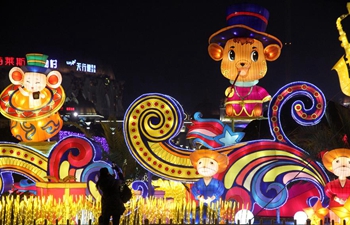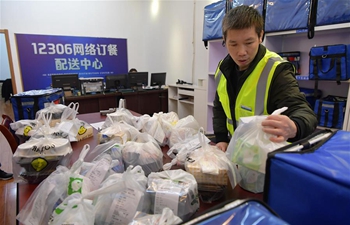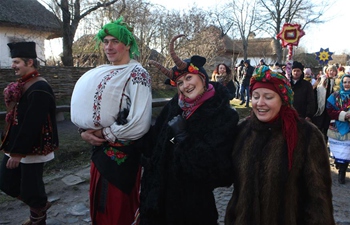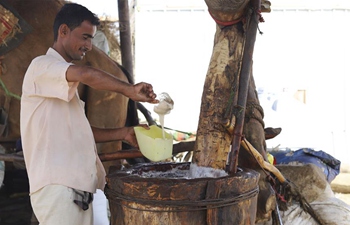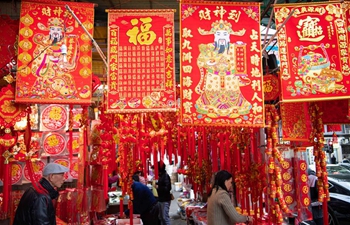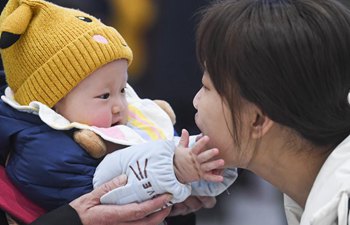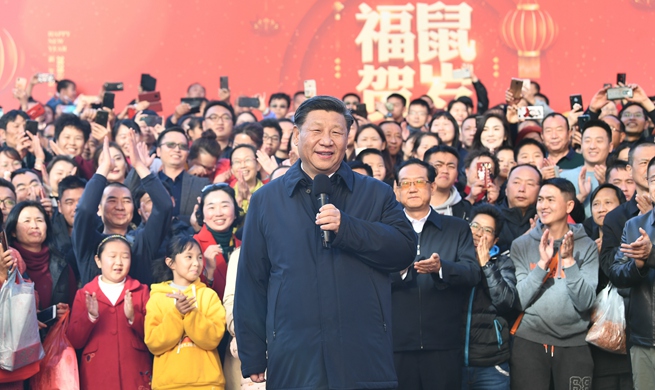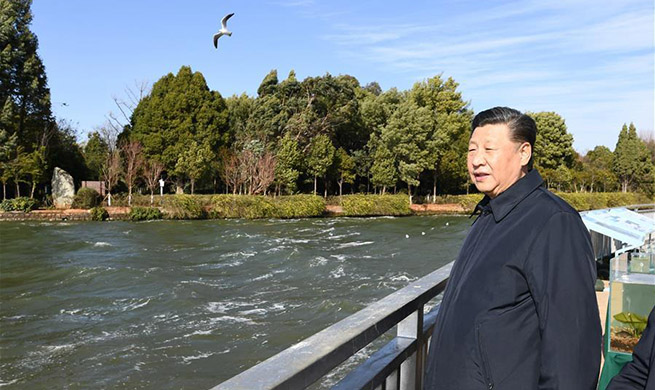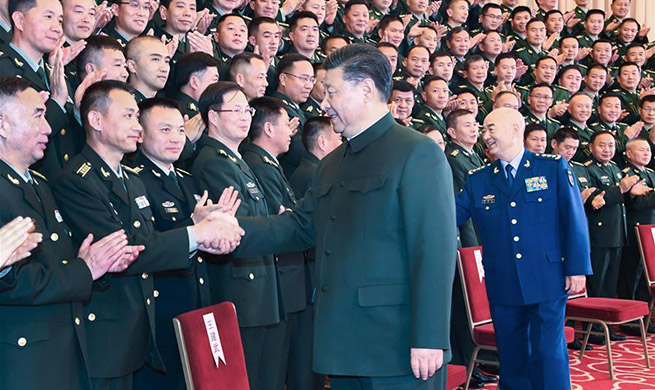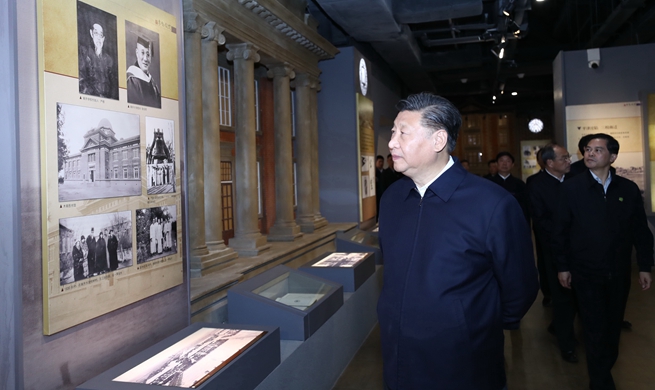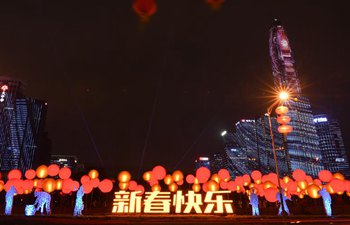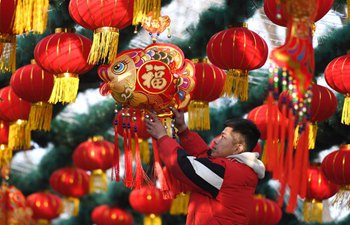KUNMING, Jan. 21 (Xinhua) -- Simola, the name of an ethnic village in Tengchong, southwest China's Yunnan Province, carries the same meaning as the Chinese character "Fu," which means happiness.
Li Fashun, 44, is a resident in the village whose full name is Zhongzhai Simola Village. In the hallway of his newly built two-story house hangs two large "Fu" decorations.
"Just like the meaning of Simola in our ethnic language, the village is a place of happiness," said Li, an ethnic Wa.
With a population of about 420,000, the Wa ethnic group is one of the 55 ethnic minorities in China and mainly lives in Yunnan.
Tengchong used to be an important frontier pass on the ancient southern Silk Road route, where horse caravans carrying goods traveled through many countries in South and Southeast Asia for more than 2,000 years. Along the southern ancient trade route, people from the area had ventured to countries such as Myanmar and India to do business.
Li, who suffers from a disability due to a road accident, used to be one of the poorest in the village which has 299 residents in total. The majority of them are of the Wa ethnic group and 10 percent are Han, Bai and other ethnic groups. Now, he lives a much better life, along with his fellow villagers, thanks to local poverty reduction efforts.
In 2020, China aims to eradicate absolute poverty which has haunted the nation for thousands of years, and vows not to leave anyone behind in achieving the great goal. Over 10 million Chinese people shook off poverty every year since 2013.
Li rebuilt his house with a government subsidy and his own investment. He raises pigs and collects recyclable waste for sale. His wife works in a factory in Dongguan, a manufacturing base in the southern coastal Guangdong Province. With various businesses, Li's family of six realized an income of 67,000 yuan (9,758 U.S. dollars) in 2019.
With government funds, the ethnic village has built a number of facilities, including a museum and a cultural activity square. Simple straw houses were transformed into ones of bricks while keeping their ethnic cultural elements. Tap water is also available.
"In infrastructure construction, we paid special attention to preserving unique local elements," said Zhao Jiaqing, Party secretary of Sanjia Village. Simola is part of the larger Sanjia Village.
Looking over from a scenic platform in the village, there are endless mountain terrace fields. Inside the village, wood and concrete rural houses with black tiles are surrounded by subtropical flowers and agricultural gardens. Cement roads are paved to the doors of every household in the village.
The villagers have revived Wa ethnic handicrafts such as making traditional costumes, brewing wine and planting and arranging flowers to diversify the tourist and cultural resources, according to Meng Jizao, a township official.
The 500-year-old village has become a popular tourist spot. Last year, it hosted 50,000 visitors, tripling the figure from 2018. All registered poverty-stricken households have shaken off poverty.
Li said public toilets had never been heard of in the village. Today, public toilets have been built and garbage bins can be found everywhere for the convenience of tourists flocking to visit the garden-like mountain village.
"We shall continue to work hard to make our life even more prosperous," said Li.
His wife just returned from Guangdong for the Spring Festival which falls on Saturday, the most important occasion for family gatherings in China.




